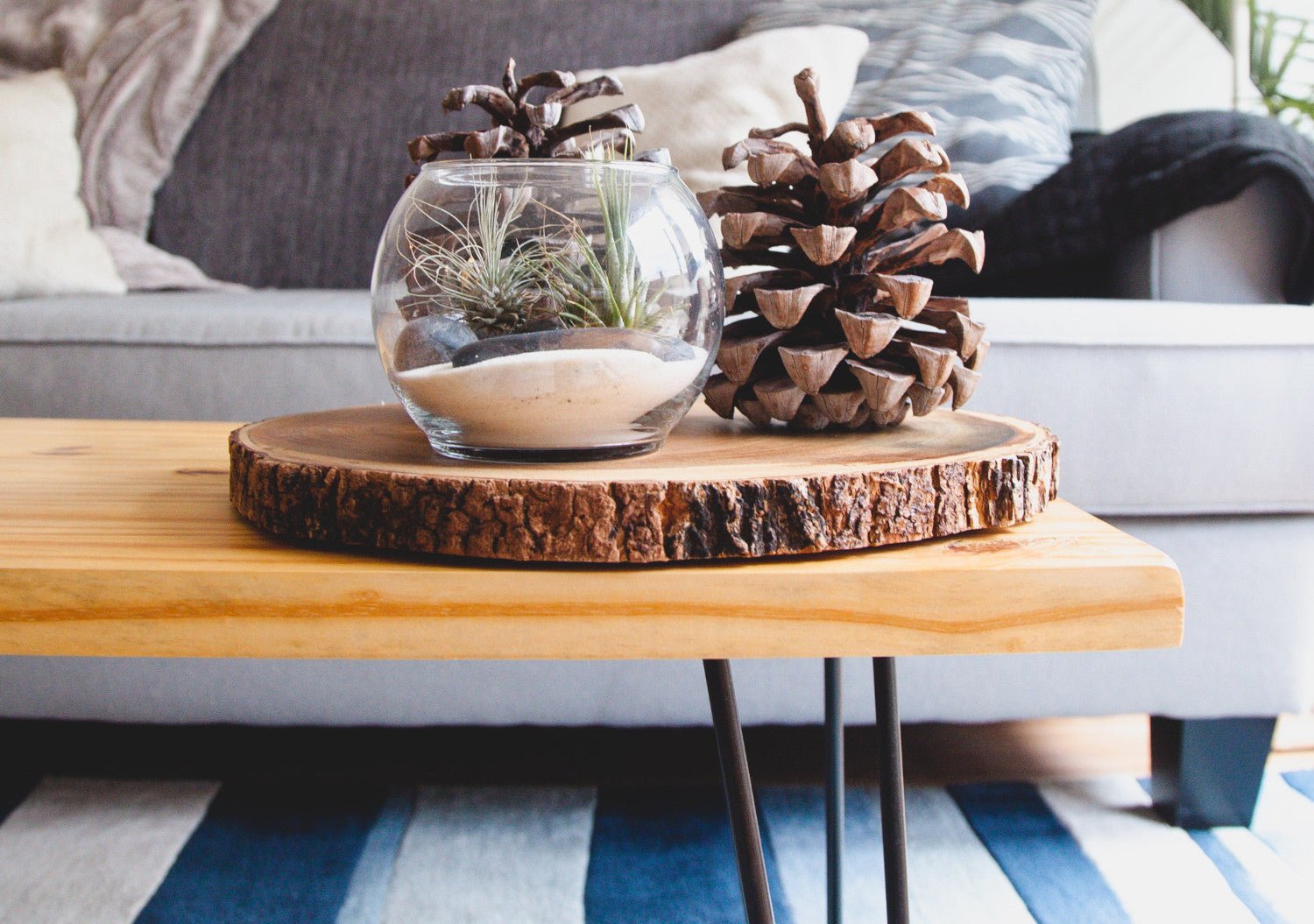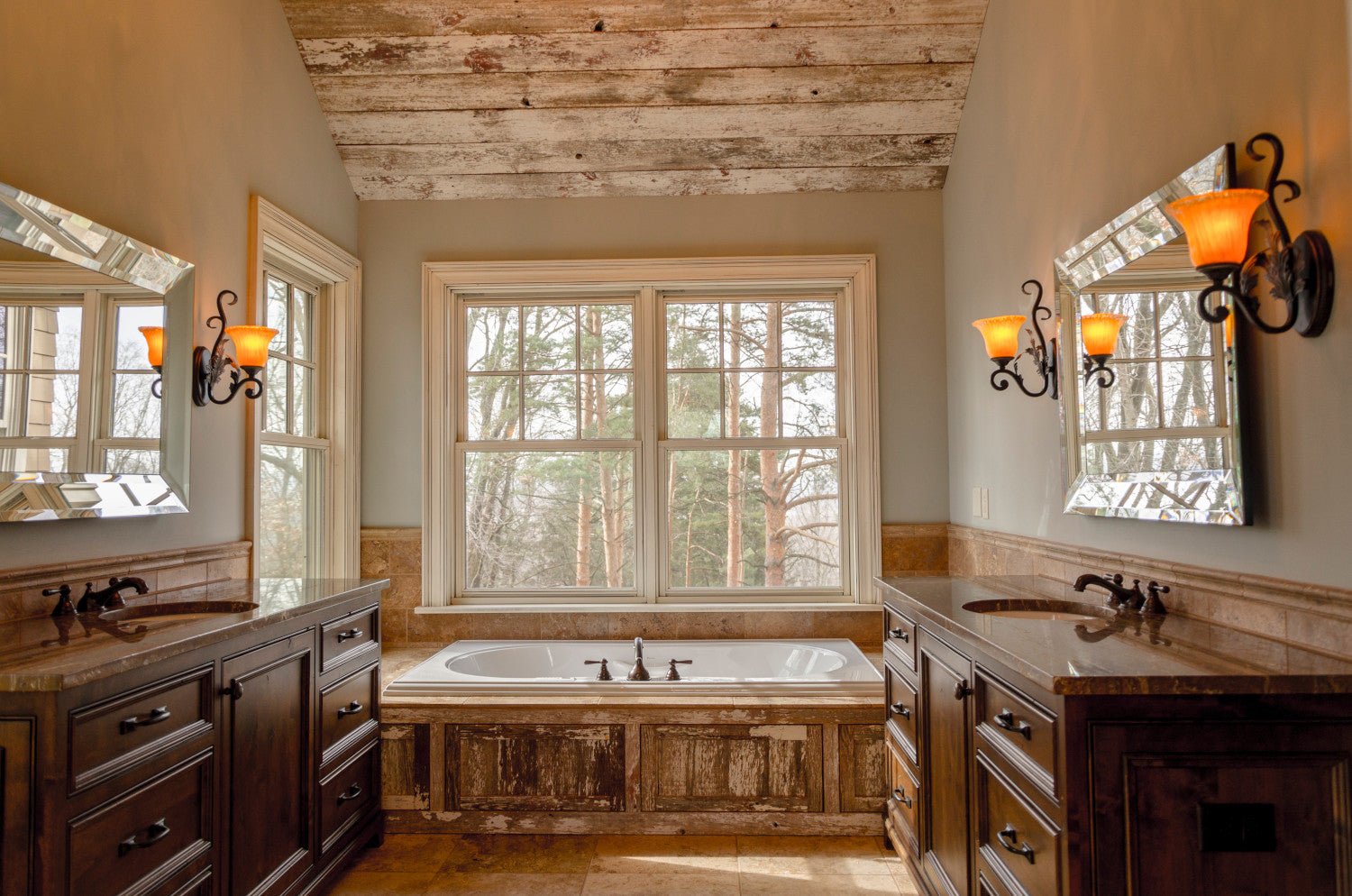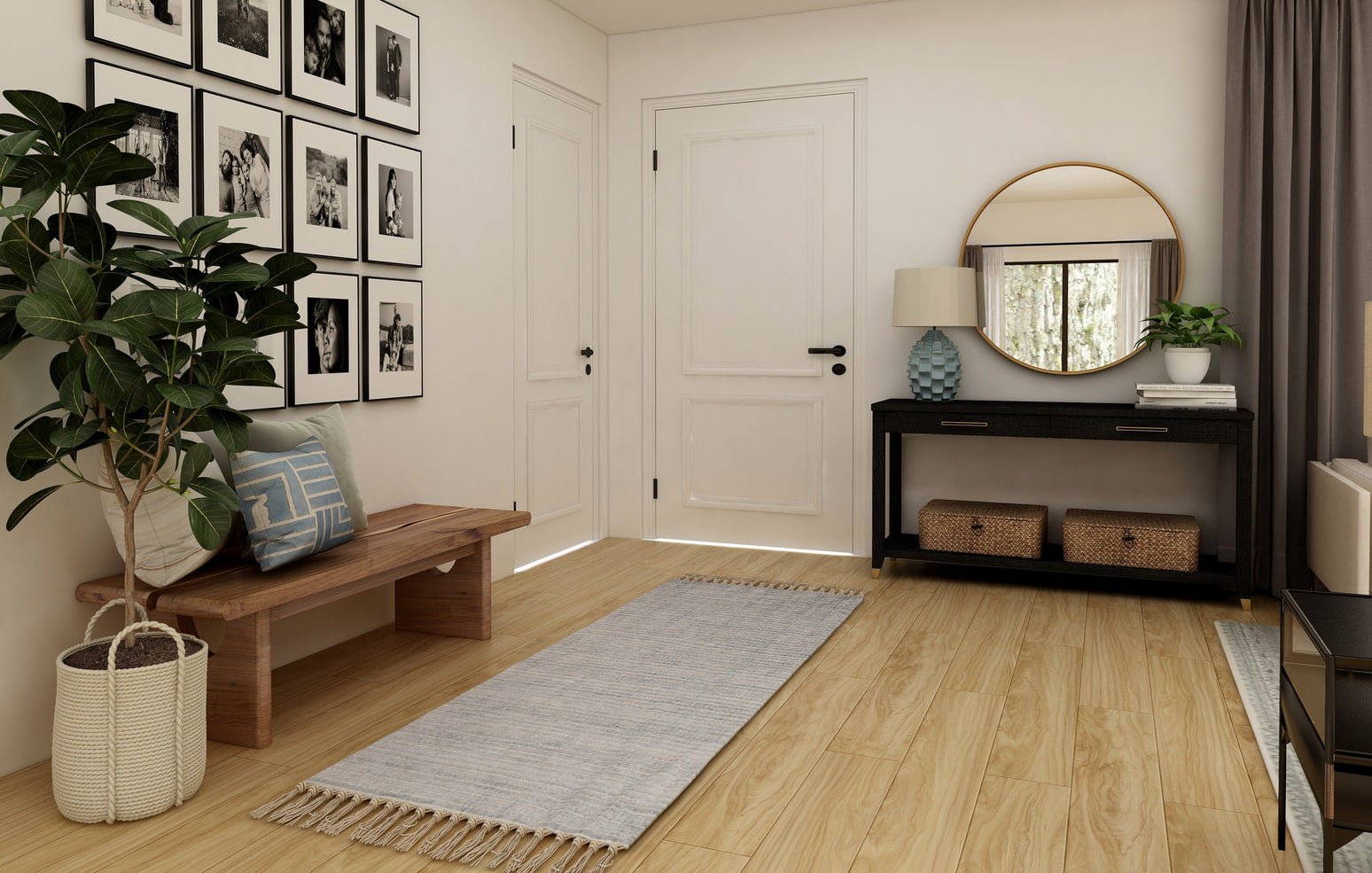Neutral color palettes, modern furniture, minimalist decor, and natural wood floors are the key elements of Scandinavian interior design. Also known as Nordic design, the Scandinavian design movement focuses on minimalism, functionality, and authentic simplicity. Its character is directly lifted from the natural climate and elements of the Scandinavian region. And today, it is one of the most popular aesthetics in modern interior design.
The Scandinavian style is a simple one to capture. The key elements of Scandinavian design are easy to access and even easier to execute. But before you can do that, you have to know the true definition of Scandinavian design, as well as the key elements that it encompasses.
In this article, we're diving deep into what Scandinavian design is. We'll cover its rich history, the key elements that it is composed of, and explain how you can incorporate this design style into your space. In addition, we will tell you where you can find the best Scandinavian furniture online that doesn't break the bank--so stay tuned!
What is Scandinavian Design?
First and foremost, what is Scandinavian design?
Scandinavian design is characterized by white walls, clean lines, modern furniture, and minimalist decor - as stated earlier. It seeks to get rid of the unnecessary, and instead, highlight the essential elements of every item in the room. Scandinavian style is deeply intertwined with the minimalism movement, but with some key differences.
The Scandinavian style combines this simplicity and functionality with just a bit of rustic energy around the edges. One of the primary goals of this design style is to evoke hygge, a Danish concept that refers to finding comfort and happiness by cherishing the little things. When creating a Scandinavian style, the goal is to create an environment that promotes contentment, well-being, and simple happiness.
A Brief History of Scandinavian Design
The Scandinavian design movement as we know it today emerged in the early 20th century and prospered throughout the Nordic region in the 1930s. The Nordics wanted to create warmth and vitality in their homes without bringing in chaos. This was to make their homes feel peaceful and light throughout the cold, dark winters. Hence, they made their homes into simple yet highly functional spaces, aiming to create clean themes without sacrificing coziness or character.
Many Scandinavian designers believe that the Nordic design originates from Danish Selskabet for Dekorativ Kunst, a Danish company that launched its Skønvirke ("Graceful Work") magazine to promote local craftsmanship in 1915. Soon, it came to rival contemporary movements like Art Nouveau, which was exclusive to the rich and social elite at the time. Skønvirke concepts, in comparison, were more accessible.
In the 1930s, Scandinavian designers such as Maija Isola, Borge Mogensen, Josef Frank, and Alvar Aaalto became the pioneers of what was known as the "Golden Age of Scandinavian Design". Their inspirations stemmed from concepts of Functionalism, Constructivism, and sometimes even Surrealism. However, it wasn't until the 1950s when Scandinavian design started to gain significant popularity. During this time, the best Scandinavian designers received the Lunning Prize for their work, which is considered the Nobel Prize of Scandinavian design--and it went on until the 1970s.
Today, Scandinavian design continues to thrive, intertwining with other interior design styles such as minimalism, contemporary, and industrialism. If you want to incorporate this design style into your home, you must know its main characteristics, which we will talk about now.
What Are The Key Elements of Scandinavian Design?
Scandinavian design is all about simplicity, elegance, and functionality. Designers aim to achieve this through simple yet sophisticated design elements, such as:
Light, Neutral Colors
A Scandinavian-style space will feature white, off-white, light gray, as well as muted greens and blues (the colors of nature). Many designers also incorporate darker, bolder colors for accents to create a stark contrast against the rest of the space.
Functional, Modern Furniture
Scandinavian furniture often features sleek lines, light wood, and neutral colors. These pieces do not take much space, often have visible storage, and make use of modular shelving. Scandinavian furniture design is heavily influenced by the concepts of Constructivism and Functionalism, with a little bit of Surrealism and Rustic in between.
Light, Airy Spaces
No Nordic design is complete without ample natural light. Thus, opening up the room as much as possible is a must. It is common for Scandinavian-style spaces to have bigger windows and little to no window coverings. Moreover, the neutral color palette of a typical Nordic design helps natural light bounce around in the room, even when there is little of it to speak of.
Minimal Decor
The Scandinavian style focuses on creating uncluttered yet cozy spaces. Using sparse yet tasteful decor is necessary to maximize the benefits of minimalist design. At the same time, clutter is kept scarce and hidden from sight.
Natural Materials
Wood furniture, wood flooring, and organic textiles are essential elements of Scandinavian interior design. The goal is to incorporate as much nature into the space as possible, and this is done by choosing pieces that are made from natural, minimally-altered materials.
Lush Greenery and Hanging Plants
Another way that the Scandinavian design brings nature indoors is through lush greenery and hanging plants. It is common to find charming houseplants in a Scandinavian-style room, most of which are low-maintenance and resistant to extreme cold.
Scandinavian Artwork
Scandinavian art pieces serve as focal points in a room, and they are often minimalist in nature. That said, Scandinavian artwork usually features the simplest of colors, patterns, and concepts. Line and monochrome are great examples.
How to Achieve The Scandinavian Look
A Scandinavian-style home is clean, elegant, and sophisticated without being cold and boring. Incorporating Scandinavian design into your home is a simple way to turn it into a minimalist haven--but without stripping away its warmth and character, which often happens with typical minimalist concepts.
Here's how you can achieve this aesthetic for your abode:
Get Rid of The Unnecessary
The first step is to clear the room of anything that you don't want or need. Start by getting rid of clutter. Then, remove furniture, fixtures, decor, and other items that do not match the Scandinavian style.
Paint The Room
Breathe new life into the room with a fresh color palette. Choose whites, off-whites, light grays, and muted shades of greens and blues for your main colors. If you wish to add accents, darker shades of blues, greens, and grays work best for creating contrast.
Change The Flooring
If you want to change your flooring, we suggest choosing light-colored wood, such as oak, pine, and beech. If changing your real floors is not an option, consider buying faux wood tiles instead. They look just like real wood and are easy to install, which is a great option especially if you are living in a rental.
Choose Modern Scandinavian Furniture
Now that you have your basics laid out, it's time to find the furniture that achieves both form and function. Stick to simple, elegant pieces that serve their function well. For example, when furnishing a Scandinavian style living room, choose end tables, coffee tables, and bookcases with light-colored wood and dark metallic accents.
A Scandinavian style room is quite similar to a contemporary style room in the way that they both focus on sleek, clean results. You can combine the contemporary style by choosing pieces that were popular in past eras or in the current age. A contemporary Scandinavian-style room, for example, may feature furniture that was all the rage in past design movements.
Want to explore more contemporary living room ideas? Check out our complete guide on the subject.
Decorate With Minimalist Decor
The next step is to decorate, which can be both the easiest and most difficult part of styling a Scandinavian room. It's easy because Scandinavian-style decor is readily accessible. But decorating can also be difficult because you are limited to only a few pieces. Otherwise, the space will no longer be minimalist.
The key is to find the best decorations that add the most visual interest. This way, you don't have to add a lot of pieces to achieve the aesthetic you want. You can keep the space sparse, but this doesn't make it boring. Choosing only the best pieces will achieve more than maximizing the space. Here are several decor suggestions for a Scandinavian style home:
- Hanging greenery
- Scandinavian graphic art
- Tactile fabrics (throws, pillows, area rugs, etc.)
- Sleek, modern light fixtures
- Large house plants
- Muted or bold accents (or a combination of both)
- Monochrome art, line art
- Black and white stripes (on throw pillows, rugs, or artwork)
- Dried plants for centerpieces
Incorporate Other Styles
The Scandinavian design style goes well with other design movements, primarily minimalism, rustic, and industrial. If you wish to spice things up, incorporate elements from other design styles into your space.
For example, you can choose furniture that features vintage iron metal accents for a more industrial look. Or perhaps you can expose your wood beams to incorporate a modern rustic feel. Take a look at our breakdown of what rustic interior design is for more information.
As you can see, the possibilities are endless--you just have to find the perfect balance between each design movement so that they complement each other, not clash.
Achieve The Perfect Nordic Aesthetic With Modern Scandinavian Furniture From Nathan James
Whether you want to go strictly Scandinavian or want to combine it with contemporary, Nathan James has everything you need to achieve your dream aesthetic. From modern Scandinavian furniture to vintage industrial furniture, our collections vary far and wide.
Turn your vision into a reality today. With our high-quality, versatile, and affordable products, you can create your dream home without breaking the bank--or sacrificing quality!





